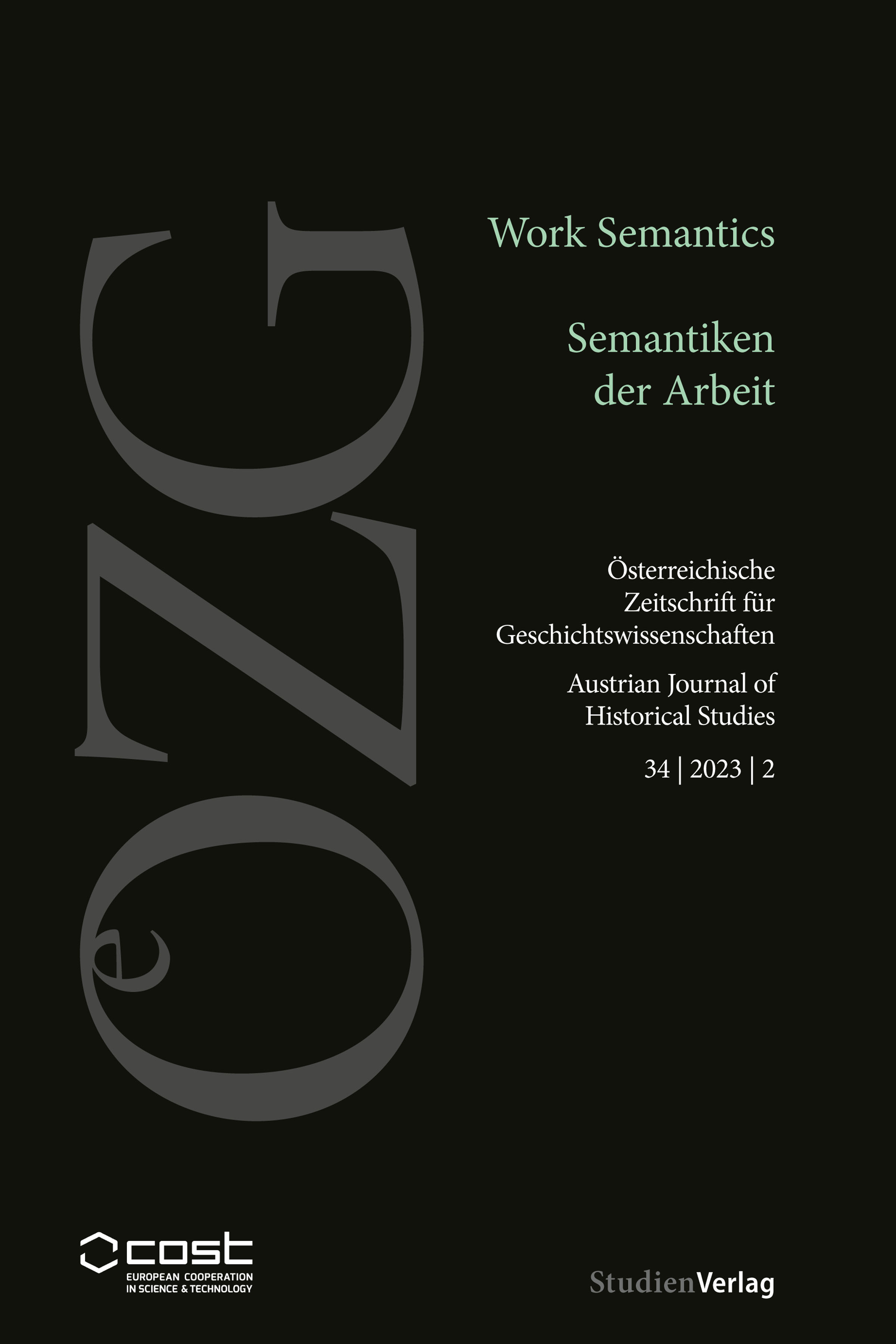Trapped Maidens and Mocked Weavers. Semantics of Ambiguity Between Remunerated and Coerced Labour in Twelfth-Century Textile Production
DOI:
https://doi.org/10.25365/oezg-2023-34-2-5Keywords:
Chrétien de Troyes, Yvain, Sint-Truiden, textile history, labour history, historical semanticsAbstract
In Yvain ou le Chevalier au Lion, a French Arthurian romance written by Chrétien de Troyes around 1180, the protagonist finds three hundred captive maidens forced to work on silk fabrics in a cursed castle and complaining about their insufficient remuneration. According to the Gesta Abbatum Trudoniensum, a twelfth-century chronicle of the Abbey of Sint-Truiden (Limburg, Flanders), hired weavers were forced by domanial officers – most probably their employers – to pull a false ship from Kornelimünster near Aachen to Sint-Truiden in 1133. In this article, the two mentioned texts are examined using semantic methods to understand the logics behind the combination of coercion and remuneration in textile labour. The action phrases are analysed, as are the lexical fields of poverty and freedom. The weavers in the Gesta Abbatum Trudoniensum seemed to have the status of hired servants (mercennarius), which implied temporary servitude for the duration of a contract. In Yvain, the insufficient wage of the weaving maidens is presented as chicanery employed to force them to work more. In both texts, poverty is conceptualised in a social, economic, legal, and political sense at once.
Downloads
Published
How to Cite
Issue
Section
License
Copyright (c) 2023 Austrian Journal of Historical Studies

This work is licensed under a Creative Commons Attribution 4.0 International License.


